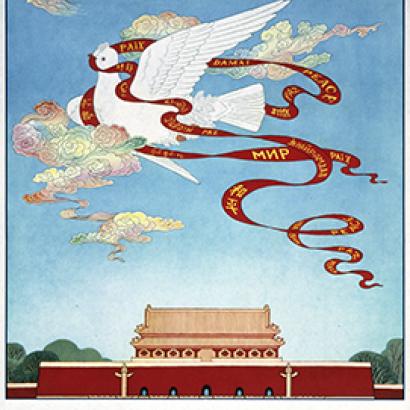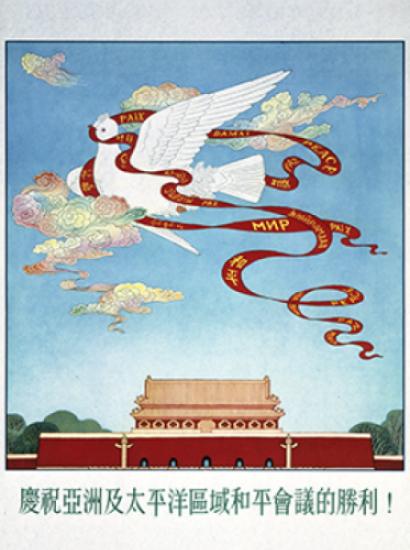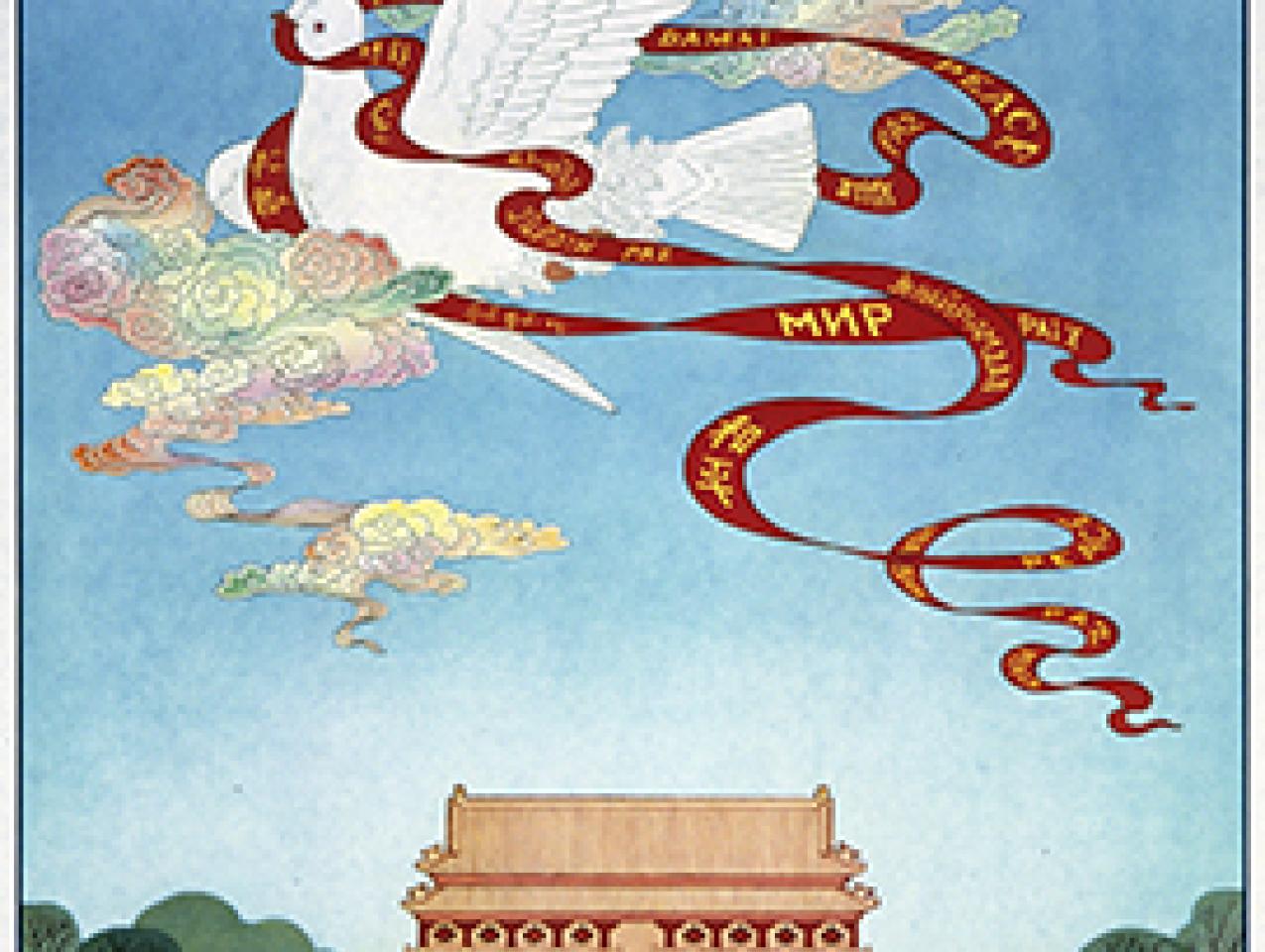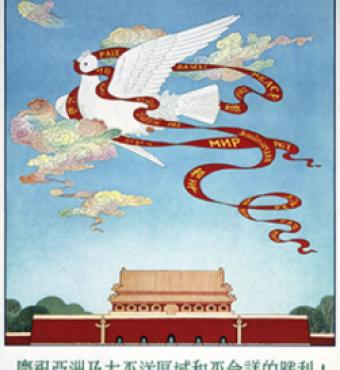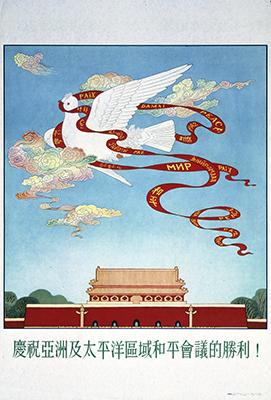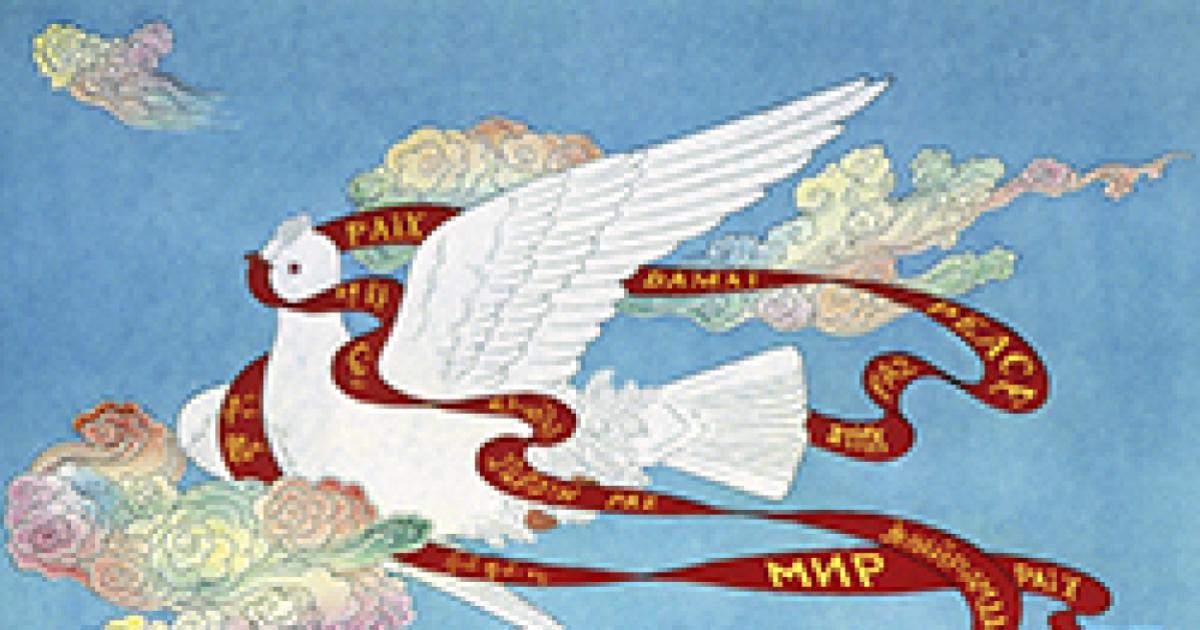- Energy & Environment
- International Affairs
- Key Countries / Regions
- China
- Security & Defense
- US Defense
- US Foreign Policy
- Politics, Institutions, and Public Opinion
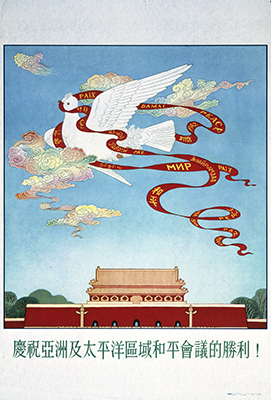
There has been a spate of recent articles proffering when the People’s Republic of China (PRC) will likely be capable of invading Taiwan. The prognostications are interesting but unhelpful as they distract from the reality of the range of coercive actions the PRC may impose on Taiwan and what could happen now as a result of the PRC increasing pressure and a related military accident or misstep in the vicinity of Taiwan.
The current American penchant to jump to military options to address thorny global problems often casts the Taiwan dilemma in a superficial bilateral or trilateral military context. That aperture must be opened more fully to consider the realities, attributes, and interests of Taiwan, and how those factors will influence the methods and timing of Beijing’s reunification objective. Moreover, those realities, some inconvenient, must underpin new and broader thinking about how to ensure Taiwan’s existence as a vibrant democracy.
Geography
Americans are notoriously bad at geography, but geography matters. Even among policy makers atlases seem to have fallen out of favor. But understanding Taiwan’s circumstances and assessing policy implications must start by looking at a map to avoid glossing over the vastness of the Pacific region, as is usually the case. The East China Sea to the north of Taiwan and the South China Sea to its south are an enormous expanse of approximately 1.83 million square miles of ocean, roughly equal to two Mediterranean Seas. The Taiwan Strait is 110 miles across, Shanghai to Taipei is 425 miles, Tokyo to Taipei 1,300 miles, and San Francisco to Taipei is just shy of 6,500 miles, or two and a half times the distance from Washington to San Francisco. With respect to those distances—advantage Beijing.
Resources—Physical and Human
Some countries enjoy the geological good fortune of being energy self-sufficient. Taiwan does not. Energy dependency is a reality in Taiwan’s political, economic, security, and social calculi. Prosperous societies with vibrant middle classes rely on energy for manufacturing, transportation, and quality of life. Taiwan imports 98 percent of its energy.1 That dependency is a vulnerability. Taiwan’s laudable renewable energy objectives hold promise, but limited land available for solar energy is a physical reality.2 Offshore wind farms are viable options but when realized add a new dimension of maritime critical infrastructure that will add to monitoring and defense needs.
Population density, limited agricultural land, and a declining labor force are factors in Taiwan’s low food self-sufficiency rate of 35%.3 These limiting factors will not improve in the coming years, keeping food imports an essential and critical import for Taiwan.
In the near and mid-term, Taiwan’s demographics with respect to workforce, military service, and public expenditures are a predictable reality. Like other Asian countries where immigration is restricted Taiwan’s demographic trend is not favorable. A growth rate of .18 percent, a fertility rate that is below the 2.1 percent replacement rate, and a median age of 40.7 years portend policy challenges in the future. Taiwan’s population will peak in 2029 and its high median age will usher in a decline in its workforce and an increased demand for elderly care and health care.4 Those unavoidable realities will drive budget apportionment and policy and define the future workforce and armed forces. Technology will compensate for some of the human shortfall in the non-military sector where adoption of technology is more readily accepted. The declining availability of young men and women for military service is real and, unlike the private sector, militaries do not readily assimilate new technology, often stubbornly holding onto the old. Taiwan is no different and the consequences of not confronting its demographic reality and thinking anew must be addressed boldly and now.
Math Still Matters
Changing defense strategy to adjust to new circumstances can’t simply discount the realities of today. The interaction of the Air Forces of Taiwan and the PRC in 2020 was extraordinarily high and costly for Taiwan, and maritime and naval considerations will also continue to loom large for Taiwan’s security.
PRC naval force structure both in terms of capacity (numbers) and capability (effectiveness and quality) has grown impressively in the past two decades and some comparisons are worth noting. There are over 330 ships in the PLA Navy and construction continues at an impressive pace.5 The Chinese Coast Guard numbers 255 ships.6 The PLA Navy, except for short episodic out of area deployments of small numbers of ships, is concentrated within the First Island Chain. Taiwan’s navy has 86 ships in service, more than half are coastal patrol craft.7 Its small Coast Guard of 23 ships is not close to being on par in numbers, ship size, or capability as that of the PRC.8 The U.S Navy stands at 296 ships.9 The American fleet enjoys a qualitative advantage, but only approximately 60 percent of the U.S. Fleet is assigned to the Pacific, with 11 of those forward deployed to Japan. The remainder are thousands of miles away.
PLA Air Force and Taiwan Air Force aircraft inventories are similarly imbalanced with fighter numbers 600 (Eastern Theater) and 400 respectively. The PLA Air Force’s fighter total is 1,500 and would inevitably backfill shortages and combat losses. The U.S. Air Force combat coded fighters number 1,011.10 The PRC’s Air Force and Navy regional concentration is reinforced by a Rocket Force of nearly 1,000 intermediate and lesser range ballistic missiles and 300 ground launched cruise missiles.11
China’s focus on “informationized” warfare integrates cyber operations into the PRC’s anti-access area denial strategy and architecture. The BeiDou satellite network enables full autonomy in positioning, navigation, and timing (PNT) information for PLA ground, sea, and air forces and is the essential factor in precision weapon employment. Another contributor to precision engagements and overall situational awareness is China’s 120 reconnaissance and remote sensing satellites.12 A robust People’s Armed Forces Maritime Militia also provides close-in maritime locating information and has and will interfere with U.S., Taiwanese, and other nations’ naval and maritime operations.
Scenarios
The United States’ ambiguous policy regarding Taiwan will likely remain. However, not preparing and investing to deter and counter the PRC’s designs on Taiwan or in the East and South China Seas is an unambiguous policy. The most discrete moves: seizure of offshore islands, a blockade (complete cut off) of Taiwan or quarantine (denying the entry of commodities), missile strikes on the island, and ultimately a full-on invasion must be addressed. But more consideration must be given to more extensive and aggressive “grey zone operations,” that activity between peace and war. It may include traditional military activity accompanied by cyber-attacks on financial, power, transportation, government, and military networks. Even if U.S. forces were not directly involved in countering complex grey zone activity, they very well may be the only logistic lifeline to Taiwan. At a minimum U.S. forces will be heavily taxed in monitoring activity in the region and Beijing’s broader economic and political influence campaigns.
U.S. logistic support must come from Japan, Southeast Asia, Australia, Guam, Hawaii or a very distant Alaska or California. Unlike strategists who have the luxury of expounding in generalities, logisticians must deal with facts such as the closest modern airbase in use by the U.S. is in Okinawa which is 460 miles from Taiwan. Guam is 1,720 miles away and Singapore, a key U.S. Navy logistic hub is 1,930 miles distant. Should Vietnam, the Philippines, and Thailand choose to support operations, the former Clark Air Force Base near Manila and Da Nang, Vietnam (Clark and Da Nang) are over 600 miles away. Thailand’s robust Utapao airbase is 1,900 miles from Taiwan, requiring a significant dogleg to avoid overflying Hainan Island.
Coordinated cyber-attacks on Taiwan’s civil and military networks will complicate and confound logistic operations and disrupt life on the island. Cyber-attacks on shipping terminals, transportation systems, and power distribution grids could constitute a quasi-blockade by jamming flows at ports of entry and inhibiting movement of supplies once they are on the island. Such interference could be undeclared and denied. Cyber disruption can also occur at ports of cargo origin such as happened in San Diego and Barcelona in 2018.
Resetting
The PRC, since 1996, has reset the region economically and militarily. It has transformed the PLA and fortified its eastern littoral. The number of forces and geography seemingly favor Beijing. But rather than only speculate on the benefits of future technology, hardware, and a “when we have X” optimism, today’s realities must be accounted for, confronted, and only then can there be a serious reset of capabilities, capacities, and concepts to address the reshaped region. This must go beyond just the military dimension and address the “gray zone.” Indeed, Beijing’s potential activities must be viewed as a “gray region” with malign activity and pressure applied surgically and in a coordinated manner around Taiwan, the SCS, and the ECS and malign activity in the cyber and informational domains.
Secretary of Defense Austin has properly addressed the “say-do” gap that has plagued the Pentagon. Overcoming that gap falls on more than just the Pentagon. Congress must adopt a renewed sense of urgency and address the changing nature of the range of contingencies in the Western Pacific. It must accept that the two decades of war in the Middle East have not prepared the U.S. for the complex air and naval environment in the Pacific today. Maintaining accurate domain awareness over such a vast area requires capacity and robust networks and the tyranny of distance will stress logistics, particularly in a highly contested environment. Moreover, the large operating base logistics model of the Middle East staffed by thousands of contractors is likely not an option for supplying wide area, multi-domain complex activity.
Rather than jump to an invasion scenario it’s best to start with what Taiwan might face today—increased operational pressure on its military accompanied by disruption to essential imports and domestic services. As recent ransomware attacks in the U.S. have demonstrated, disrupting essential elements of daily life are consequential and have broader political and economic effects. Cyber-attacks, whether attributable to Beijing or not, will disrupt life in Taiwan. Detecting, responding, and recovering from malicious activity must encompass financial systems, power generation and distribution grids, ports and transportation nodes and networks, government services, and military networks.
A Starting Point
Much can and needs to be done to recast the security equation of Taiwan, the East Asian littoral, and the broader Indo-Pacific. Adoption of new concepts, technology, and systems must be undertaken with urgency. They must be developed, tested, and fielded much more quickly than today’s norm. Leaders in the executive branch and in Congress must not be satisfied with simply starting programs or announcing new concepts but rather with achieving quickly the intended outcome. The other top priority must be enhancing our ability to rapidly move forces to the region and sustain high intensity protracted air and naval operations. The latter is a powerful and essential enhancement and signal to the region, and both are strategic and operational imperatives. The following are worthwhile starting points.
Taiwan
Taiwan’s dilemma demands a new way of doing things. It cannot continue to rely on old procurement strategies and operational concepts. However, it still must know what is taking place in and around the island. Accordingly, Taiwan must prioritize air, surface, and subsurface domain awareness systems to accurately monitor PRC military and quasi-military (i.e., Coast Guard and Maritime Militia) activity to respond efficiently and husband its under-matched force. This should include immediate recapitalization of airborne early warning aircraft while transitioning rapidly to a reliance on long endurance unmanned platforms. Investments should be made in high-speed unmanned surface craft for close-in monitoring of areas of maritime importance (e.g., ports, critical infrastructure, and likely infiltration and landing areas). This is a good match with Taiwan’s technological competence and a shift to more unmanned systems, if done efficiently (no old staffing models) will mitigate its looming demographic pressures. The bias toward a preponderance of unmanned networked systems means turning away from small numbers of exquisite platforms that consume a disproportionately large portion of the defense budget.
Keeping the lights on and the island supplied are essential, and here Taiwan can lead in the development of an Integrated Conflict (not solely Battle) Management System. That distinction implies a whole of government and island monitoring and response system that encompasses military and non-military conditions, operations, and infrastructure. Financial, transportation, power, and other essential utilities and services must be included. The military and transportation dimensions of the system must be able to rapidly integrate with U.S. and U.S. alliance Integrated Air and Missile Defense Systems, Battle Management Systems, and logistic networks.
To address the most stressing scenarios, a key component of Taiwan’s defense capability must include a robust, integrated coastal and shore defense system capable of precision anti-ship weapons (missiles and directed energy) and high-volume fires whose killing fields will be the island itself should Mainland forces attempt to gain a foothold. As adversary unmanned underwater and air systems become more common, defensive systems to counter individual or swarming adversary unmanned vehicles must be part of that defensive wall.
Taiwan must prepare for protracted pressure along any or combinations of measures the PRC could apply. Accordingly, adequate supplies of fuel, food, and military consumables and expendables must be maintained, and the means and methods of resupply ascertained and exercised in advance.
The United States
Persistent American naval presence in the Indo-Pacific is a powerful and reassuring signal. Apart from a Taiwan contingency, the military growth of the PLA, the shifting balance of military power in the Indo-Pacific, and the economic importance of Asia demand an immediate rebalancing of U.S. force structure to 80 percent in the Pacific and 20 percent to the Atlantic rather than the current 60-40 apportionment. The cost of that realignment is not insignificant but biasing to the west is a strong strategic signal to the region. The primary impediment to such a realignment is domestic U.S. politics as eastern states are loath to see any migration of forces away from their respective states and economies. This is an important time and strategic imperatives must outweigh local politics.
Any military contingency in the Indo-Pacific will be logistically intensive and more sealift from the U.S. to the region will be required. Distances and assured resupply require more U.S. flagged ships as Beijing can be expected to use its global maritime footprint and clout to dissuade non-U.S. shipping companies from supplying Taiwan. Sadly, there are only 99 U.S. flagged ships engaged in U.S. foreign commerce today.13 Sixty of those ships can be called upon to participate in possible military contingencies and may be the only means to replenish Taiwan’s military supplies in a crisis. Moreover, U.S. leaders will have to decide how to apportion shipping to support Taiwan and what to retain for other military contingencies. Even if the decision is made to commit U.S. flagged ships, their average age of 45 years—nearly twice what is considered full-service life in commercial fleets—portends availability and readiness shortcomings. The shipping shortfall can be closed rapidly by purchasing relatively new excess capacity foreign built ships.
Apart from moving commodities and equipment, in-theater sources of supply, primarily fuel, must be diversified and in-theater tanker aircraft and ships should be in the region continuously to respond promptly to contingencies and sustain persistent operations over large areas.
U.S. operational command and control organizations should be optimized for broader crisis response and combat operations in the Indo-Pacific. The U.S. Navy is a first mover in that regard with a proposal to establish a new fleet headquarters with responsibility for the western Pacific and Southeast Asia.14 Particular effort should be made to include Japan and Australia as key participants (not observers) in evolving command and control organizations. Redesigned headquarters must be capable of exchanging military and non-military data, information, and intelligence relevant to gray zone activity to include information originating and terminating in Taiwan.
U.S. unmanned system procurement and operational concepts must go beyond variations of systems and operations used in the Middle East wars. Long endurance underwater systems must be developed aggressively. The creation of robust network architectures must be as much a focus as the vehicles. The systems must be commonly operable and interchangeable with allies, which requires co-development of control stations and networks. The hard work of breaking down intellectual property and security constraints must be a priority. For allies and partners Missile Technology Control Regime limitations must be relaxed.
Japan
Japan and the strength, capacity, and resolve of the U.S.–Japan alliance will determine the future of the security environment in East Asia. Japan has long appreciated and valued the strategic importance of Taiwan as the key to controlling the vital sea lanes within the First Island Chain. The Alliance must have a coherent and coordinated approach to collective activity in the East China Sea, the areas around Taiwan, and the South China Sea. No longer can each be viewed in isolation.
Compatibility and connecting domain awareness platforms, methods, and networks are essential. Accordingly, the intelligence dimension of the U.S.–Japan alliance must be elevated to be on par with the Five Eyes intelligence alliance which should fold Japan into a Six Eyes or, as an initial step, a Five Plus One relationship.
Detailed planning for contingencies within the First Island Chain should be prioritized and must include responses to economic pressures that could be applied by the PRC to influence regional access and support. In that vein a key element of the planning effort must be logistic support to wide area operations and support to a quarantined Taiwan.
As the U.S. evolves its command-and-control organization for the region, Japan should undertake complementary changes with the initial step of creating a distinct operational joint warfighting headquarters.
Japan’s extraordinary maritime force is essential in maintaining dominance in regional undersea warfare. That should be enhanced with cooperative programs to develop and employ new families of unmanned autonomous undersea vehicles and associated networks.
Although politically sensitive, Japan should acquire and field a long-range strike capability. The complexity of defending its territory and forces against advanced missiles will increase in the coming years and to rely on intercepting every one is flawed. Striking the archer before the arrows are let go is a far more prudent and effective defense.
Conclusion
Taiwan is a unique democracy and a vibrant society. In the last great conflict in Asia, Fleet Admiral Ernest King referred to the unique and strategically important island as the “cork in the bottle.” It remains so today. In this time of challenge, it is time to think beyond military contingencies and examine more deeply how to support Taiwan over the long term, and what that portends for the region, U.S. allies, and America’s position in Asia and beyond. I hope this paper opened the aperture for that discussion.







